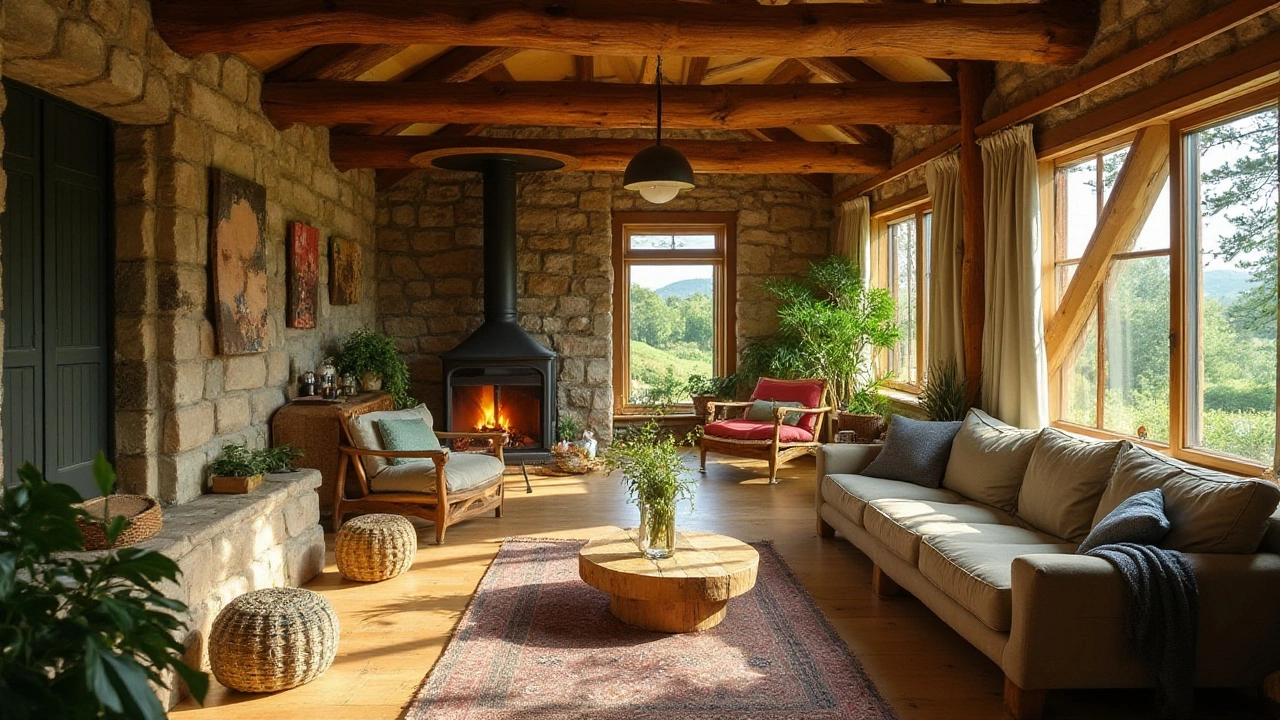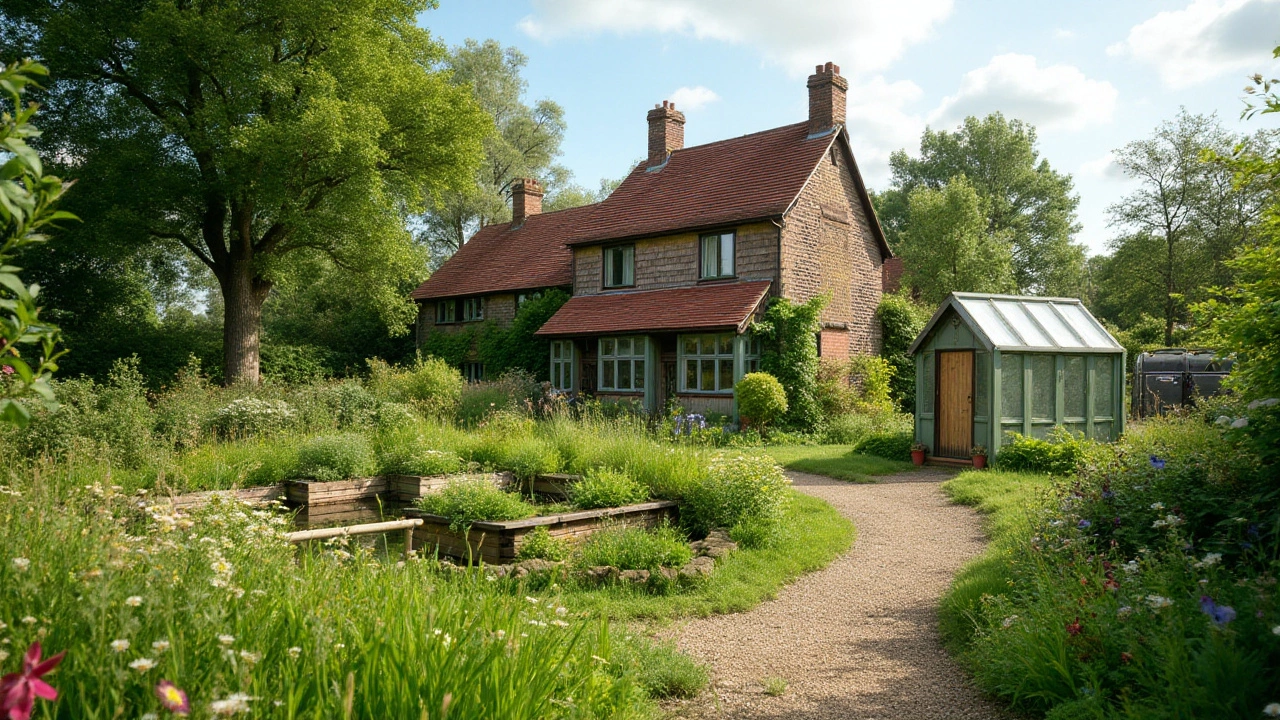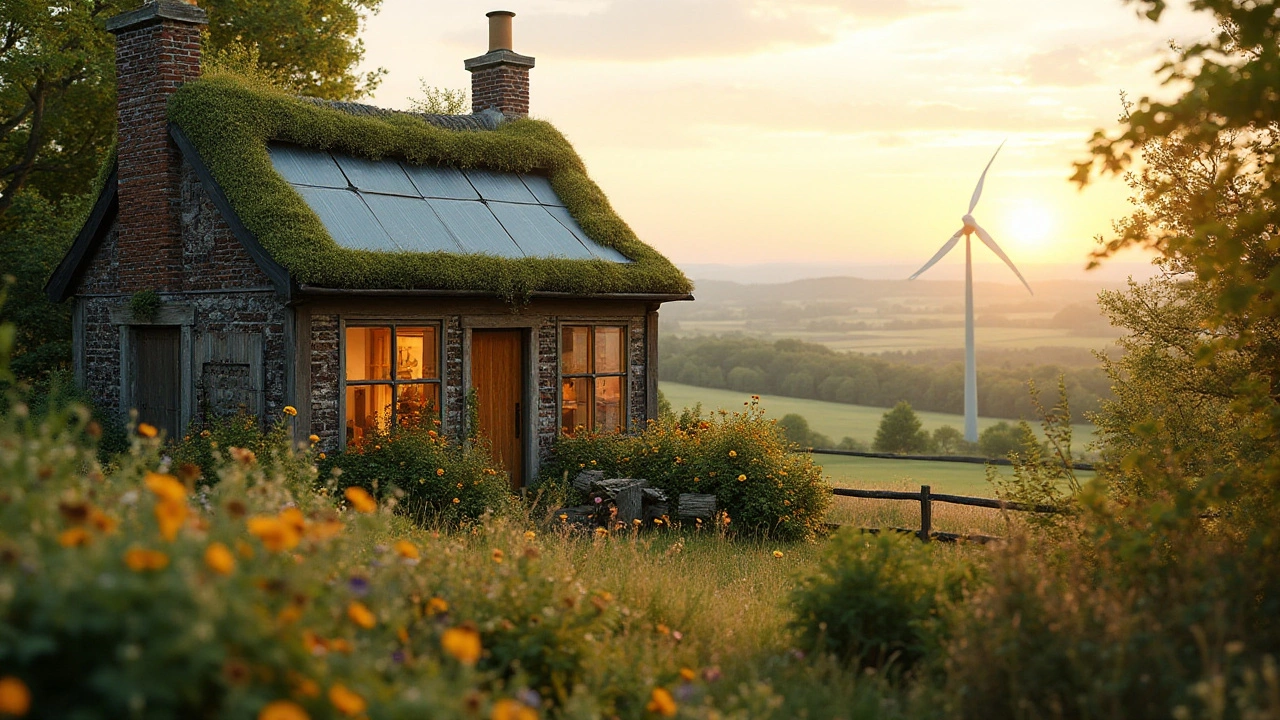As the yearning for a simpler, more sustainable lifestyle grows, the concept of an eco-friendly cottage becomes an enticing prospect. These quaint dwellings blend the charm of rustic design with the ethos of green living, offering a peaceful refuge without costing the earth.
In this article, we'll embark on a journey to build an eco-friendly cottage that respects the environment as much as it satisfies your soul. You'll discover how to carefully plan each aspect, from the materials you choose to the energy systems you implement. With a thoughtful approach, your cottage can become a shining example of sustainable living, serving both as a personal retreat and a sanctuary for the planet.
- Location and Orientation
- Material Selection
- Energy Solutions
- Water Conservation
- Eco-Friendly Interior Design
Location and Orientation
Choosing the right location and orientation for your eco-friendly cottage is crucial to ensuring it functions efficiently and sustainably. One cannot stress enough the importance of aligning the cottage with the natural environment to maximize energy-saving benefits. Selecting a plot that capitalizes on natural resources like sunlight and wind is often the first step. For instance, a south-facing orientation is typically desirable in the Northern Hemisphere as it absorbs maximum daylight, reducing the need for artificial lighting and heating during the day. In contrast, in the Southern Hemisphere, a north-facing orientation achieves the same effect. It's not just about sunlight; prevailing winds can also aid in natural cooling if your structure is smartly positioned to harness this natural airflow.
Beyond the natural factors, think about access to essential resources such as water and roadways, yet ensure these infrastructures do not disrupt the ecological balance of the area. Consider how your property integrates with the local ecosystem; preserving existing flora helps maintain the local biodiversity.
"The best environmental option is one which integrates itself gently into its surroundings," elucidates renowned architect Sarah Susanka.Observe the land's natural contours, as incorporating these can help in water management, mitigating erosion, and maintaining soil health, crucial aspects for a sustainable design.
Let's not overlook the sociocultural factors of your cottage location. While solitude might be attractive, the proximity to local communities can enrich your living experience through cultural exchanges and accessing local produce, which supports sustainable living. Moreover, with the rising focus on reducing carbon footprints, locating closer to amenities reduces reliance on vehicular transport. Bear in mind that these decisions have long-term implications; hence, research and due diligence are key. Getting local insights can often shed light on factors that might not be immediately apparent to those unfamiliar with the area.
When considering orientation, the cottage's back and side facades can play roles as significant as the front. While the front is typically oriented for light, the others can be designed for views, gardens, or privacy. This multifaceted approach ensures that the cottage provides comfort without sacrificing its eco-friendly ethos. With the right balance of aesthetics and practicality, your living space will not only be a joy to inhabit but will echo a commitment to harmonious living with nature. Don't forget to document these considerations meticulously in your planning phase; having a solid documented plan becomes invaluable as you progress in constructing your sustainable haven.
Material Selection
When embarking on the journey to build your eco-friendly cottage, the choice of materials becomes a cornerstone of your sustainable mission. Timber sourced from responsibly managed forests offers a renewable option, ensuring that your construction aligns with ecological principles. Select wood certified by the Forest Stewardship Council (FSC), as it guarantees forest management practices that protect biodiversity and uphold the rights of indigenous communities. But wood isn't the only option. Straw bales and adobe, traditional materials used for centuries, provide excellent insulation properties, while clay and stone, often sourced locally, can reduce transportation emissions.
Modern technology opens the door to recycled materials, adding a novel dimension to your eco-friendly creation. Recycled steel and reclaimed wood not only reduce resource extraction but also lend character to the rustic design. Consider using composite materials made from recycled plastics, which are both durable and low-maintenance. Embracing these solutions aligns your cottage with broader sustainability goals, ensuring that every brick speaks of reduced waste and responsible consumption. As environmentalist Bill McKibben once said,
"The best way to celebrate Earth Day is with commitment, not sentiment. A commitment to live lighter on the planet."
The quest for sustainability in your eco construction extends to insulation and roofing. Opt for insulation made from recycled cotton or sheep wool, which provides excellent thermal efficiency while reducing landfill waste. When it comes to roofing, consider metal or green roofs, which can enhance energy efficiency and offer longevity compared to traditional materials. A green roof, covered in vegetation, not only helps with insulation but also promotes biodiversity, turning even the humblest cottage into a habitat for native plants and wildlife. This strategy creates a seasonal symphony where birds and insects find sanctuary, making your cottage part of a thriving ecosystem.
Incorporating natural, non-toxic finishes for your green home ensures that indoor air quality remains pristine. Paints and varnishes with low volatile organic compounds (VOCs) are kinder to your health, eliminating harmful chemicals from your environment while ensuring that your living space breathes easily. Explore natural oils and waxes for wood treatments, which protect and nourish timber without harsh industrial additives. These strategies make your home a safe haven, welcoming you with the pure fragrance of nature.
To conclude this deep dive, integrating sustainable materials into your cottage fosters a legacy of ecological responsibility and charm. Whether through innovative recycled components or timeless natural resources, these choices echo the whispers of nature, reminding us that our homes should nurture the earth as they nurture us. By weaving sustainability into the fabric of your cottage, you craft not only a dwelling but a testament to mindful living.

Energy Solutions
When it comes to building an eco-friendly cottage, exploring renewable and sustainable energy solutions is pivotal. The primary objective is to minimize reliance on non-renewable resources and embrace options that align with the ecological footprint you intend to reduce. It begins with assessing your cottage's energy needs and understanding the local climatic conditions, which play a crucial role in determining efficient energy resources.
Solar energy stands as a popular choice for many aspiring eco-homeowners. Solar panels, often mounted on the roof, directly harness energy from the sun to generate electricity for your dwelling. Consider the number of sunny days your location receives annually to gauge the feasibility. A well-designed solar system not only powers appliances but can also heat water, reducing reliance on traditional electric or gas systems. In areas where sunlight is a bit scarce, consider investing in batteries to store solar power for overcast days, ensuring a consistent energy supply.
A report by the International Energy Agency states, "Solar energy becomes the new king of electricity generation, set to become the primary source of power generation."
Wind turbines offer another enticing avenue for renewable energy solutions, particularly in regions with frequent windy conditions. For those residing in areas where wind speed averages are favorable, small-scale wind turbines can significantly contribute to your cottage's energy requirements. Although the initial setup costs can be relatively high, they can prove economical over time with reduced utility bills.
Beyond these, one must consider geothermal energy installation options if your area allows. Tapping into the earth's naturally occurring heat, geothermal systems can effectively regulate the indoor temperatures of your cottage, providing efficient heating in winter and cooling during summer. They operate silently and require minimal maintenance after the initial installation, making them a viable long-term investment for your ecological abode.
Combining multiple energy solutions can maximize efficiency and reliability. Incorporating smart energy management systems enables real-time monitoring of energy usage, so adjustments can be made to optimize consumption. Software tools and smart meters offer insights that guide homeowners in making informed choices, promoting an energy-conscious lifestyle. Employing these diverse aspects will not only cultivate your eco-friendly cottage but will also align it with a greener future.
Water Conservation
Water conservation isn't just a convenient choice when building eco-friendly cottages; it's a vital commitment to preserving our planet's dwindling fresh water resources. Implementing effective strategies in your cottage helps you live sustainably, reduces your utility bills, and contributes to a larger environmental cause. Begin by considering how rainwater harvesting can be incorporated into your design. This technique allows you to collect and store rainwater for various uses around the home, such as watering the garden or even flushing toilets, making it an invaluable method for reducing your dependency on municipal water supplies. This concept not only resonates with the eco-friendly ethos but is also incredibly practical, especially in areas prone to drought.
Moreover, gray water systems present an innovative way to recycle water within the home. Water from sinks and showers can be repurposed for irrigation or toilet flushing, effectively minimizing waste. To ensure that your eco-friendly cottage achieves optimum water efficiency, installing low-flow fixtures across sinks, showers, and toilets is imperative. These fixtures dramatically reduce water usage without sacrificing performance. The Environmental Protection Agency (EPA) notes that WaterSense-labeled products are often about 20% more efficient than their traditional counterparts, helping save water while maintaining functionality.
"Every drop saved is a step toward sustainability," says Dr. Clara Richards, a renowned environmental scientist, underlining the importance of thoughtful water consumption.
Implementing these solutions means crafting a home that not only respects your needs but also honors the environment. Considering the sustainable landscape, opting for native, drought-resistant plants in your cottage garden is a clever strategy to cut down on water usage. These plants naturally require less water and are typically more resilient to local pests and diseases. It's a win-win situation as they support local ecosystems while keeping your garden lush and vibrant.
Your approach to water conservation in an eco-friendly cottage is both a strategic and ethical endeavor. By integrating smart, sustainable solutions into your daily life, you're not merely building a home—you're contributing to a healthier planet. And as you sit back, watching the clever systems work their magic, you can enjoy the peace of knowing you're part of a solution that truly matters.

Eco-Friendly Interior Design
Creating an eco-friendly interior design involves more than just aesthetics; it's about fostering a living space that aligns with environmentally sustainable principles. When embarking on the design of your eco-friendly cottage, consider minimizing environmental impact through the choice of fabrics, furniture, and finishes. A great starting point is sourcing furniture made from reclaimed wood or repurposed materials, which not only adds character but also conserves valuable resources. Choose non-toxic, plant-based paints and finishes that emit low or no volatile organic compounds (VOCs), ensuring a healthier indoor air quality for you and your family. Opt for natural fibers like organic cotton, wool, or hemp for textiles and upholstery, as these options are biodegradable and often produced with fewer chemicals than their synthetic counterparts.
The layout and functionality of your cottage should prioritize natural light and passive solar heating. Arrange spaces to maximize sunlight during the day, which can reduce dependency on artificial lighting and heating. Consider open-plan designs that facilitate easy airflow, enhancing both energy efficiency and comfort. For flooring, bamboo is an excellent sustainable option due to its rapid renewability. Alternatively, look into cork flooring, renowned for its durability and softness underfoot. Install energy-efficient windows and doors, which help in maintaining temperature effectively within the home, reducing the reliance on powered heating or cooling systems. Even small changes, like adding a few indoor plants, can significantly improve air quality while boosting the natural charm of your interiors.
Lighting is another essential element in eco-friendly interior design. Switching to LED bulbs throughout your cottage can lead to significant energy savings over time. Consider the use of solar-powered lighting fixtures for exterior spaces, further decreasing electricity usage. When choosing light fixtures, explore those made from recycled glass or metal. Another layer of sustainability can be achieved by investing in appliances and fixtures with high energy efficiency ratings, such as refrigerators, ovens, or water-saving faucets and showerheads. Each selection should reflect a balance between functionality, aesthetic appeal, and respect for the environment.
"Sustainable design goes beyond simply using recycled materials. It's also about creating environments that enrich quality of life and promote well-being," says Jason F. McLennan, a leading figure in sustainable construction and design.
Decorative elements can also play a significant role in expressing your green values. Select accessories crafted by local artisans, which supports sustainable practices and the local economy. Handmade ceramics, for example, offer a charming, unique touch to your interior atmosphere. Additionally, employing upcycled or vintage pieces can add a unique flair while serving an environmentally conscious purpose. When each piece in your cottage aligns with your sustainability goals, the setting becomes not just a home but a testament to mindful living.
